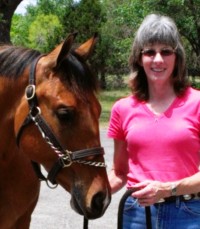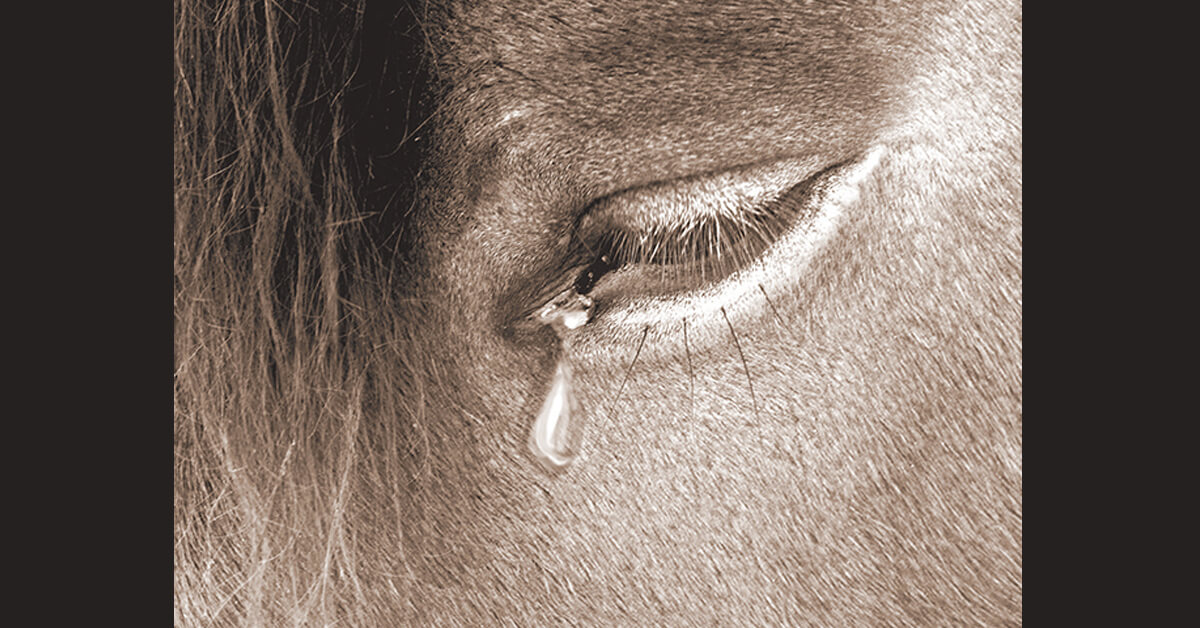Many of us grew up watching “Lassie”. The poor collie kept busy leading rescuers to accident-prone Timmy after he fell down cliffs, got stuck in quicksand, or ended up in abandoned mine shafts. After a bit of drama, the rescuers always successfully extracted Timmy from his entrapment.
Would the rescuers have succeeded if it had been Lassie in the well? What if it had been a horse? What if it was your horse?
As all horse lovers know, our four-legged friends are accident prone. This is due to their size, reactive nature, and the situations in which humans tend to put horses. Horses have been trapped in swimming pools, septic tanks, overturned trailers, frozen ponds, mud, large tires (commonly used as hay feeders), and collapsed buildings—to list a few common entrapment locations.
Michelle Staples, author of Save Your Horse! A Horse Owner’s Guide to Large Animal Rescue (available on Amazon) explains, “When horse owners cannot remove trapped animals on their own, they call emergency responders—usually the fire department. Unfortunately, most first responders are not familiar with horses, and can inadvertently injure themselves, bystanders, and the horse they are trying to help.”
Very few states have formal Large Animal Rescue (LAR) training for fire department and law enforcement members. This means horse owners must be the driving force to initiate LAR education for their local emergency responders.
Large Animal Rescue training is very technical. It involves learning life-saving skills and how to use specialized equipment, which must be available. The training covers how to keep the rescuers safe while working with large and possibly injured animals, and how to keep the animals safe too. The use of levers, pulleys, straps, glides, ropes, drags, and winches is taught during LAR training. It is important to understand the correct use of the equipment so as not to injure the horse.
Veterinarians should also be encouraged to learn about LAR. Few veterinarians are trained on how to use the equipment needed to move a trapped animal. The calming presence of the horse’s vet, who can sedate and treat the horse while working knowledgably with the emergency responders, will increase the odds of a successful rescue.
It is also possible the vet may not be allowed at the scene of an accident if he does not have an official agreement with local responders. Horse owners should contact their veterinarians and find out if he or she would be willing to respond to a LAR incident. If the vet is willing, the parameters of the response should be stated in advance via a Memorandum of Understanding (MOU). This document should cover the following points:
- Requirement of veterinarian’s knowledge of LAR procedures
- Release from Liability of veterinarian in LAR response
- Who will pay for veterinarian’s response
- How, and under what circumstances, the veterinarian will be notified
- What restrictions will be placed on veterinarian at the scene
- What will be expected of the veterinarian and the responders
If LAR hands-on training is not available in your area, give your vet a copy of Michelle Staples’ book Save Your Horse! A Horse Owner’s Guide to Large Animal Rescue. The book covers how to safely respond to a LAR incident and contains a sample of a MOU between veterinarians and emergency responders.
In addition to Staples’ book, other books available are Equine Emergency Rescue, co-authored by Mary Anne Leighton and Michelle Staples, and Technical Large Animal Emergency Rescue by Drs. Rebecca and Tomas Gimenez. Websites are Red Jeans Ink (www.saveyourhorse.com) and Technical Large Animal Rescue (www.tlaer.org).
While these resources are recommended, those who have read the books or have taken Michelle Staples’ online course (see link below), will not be equipped mentally, emotionally or technically to assist with a rescue. Individuals who have not practiced with live animals or dummies are not considered trained in LAR. However, they may be able to share their knowledge with the incident commander at the scene.
Proactive horse owners should contact qualified instructors through one of the above websites and organize an operational level LAR class in their area. Be sure to invite members of your fire department, animal control, local horse organizations and large-animal veterinarians.
Horse owners should be familiar with large animal rescue methods, have the required equipment available, and carry the books in the vehicle when transporting a horse. As the Boy Scouts motto states, “Be prepared.”
* Take the online course “Equine Safety and Rescue” taught by Michelle Staples. Go to www.equinestudiesinstitute.org/equine-safety-and-rescue-course-description for more information.
©2017 The Way of Horses

Eleanor Blazer was raised training and caring for horses. She learned to ride and care for the horses her family bought and sold. Many of these horses required improved nutrition when they arrived for training. Eleanor’s experience and research has benefited both horses and horse lovers in the field of equine nutrition. An equine nutrition consultant, based in Bulverde, Texas, she keeps busy doing equine nutrition consultations, conducting seminars, and speaking to youth groups about horse care and nutrition. Eleanor is the author of the syndicated column The Way of Horses. She has more than 20 years experience helping and being a mentor to those wanting to know how to provide the very best care and nutrition for our special friend – the horse.






